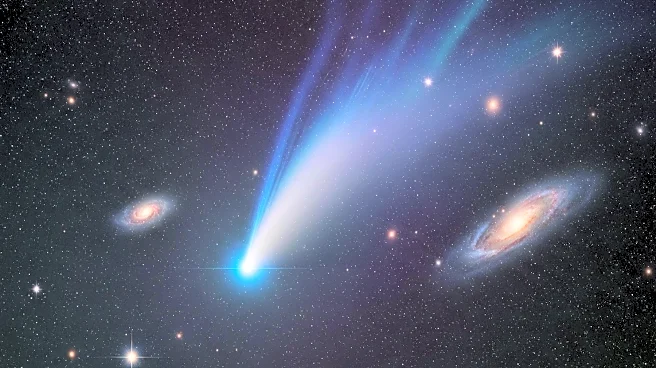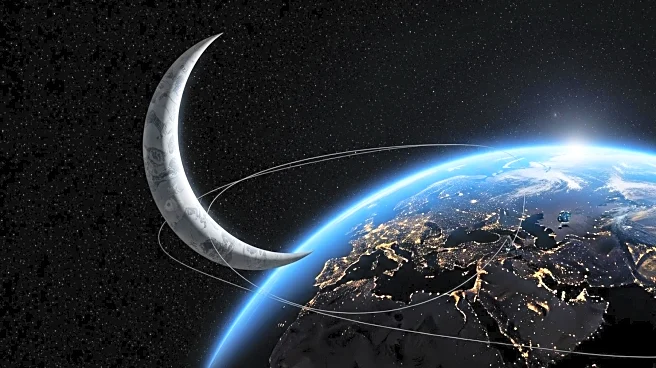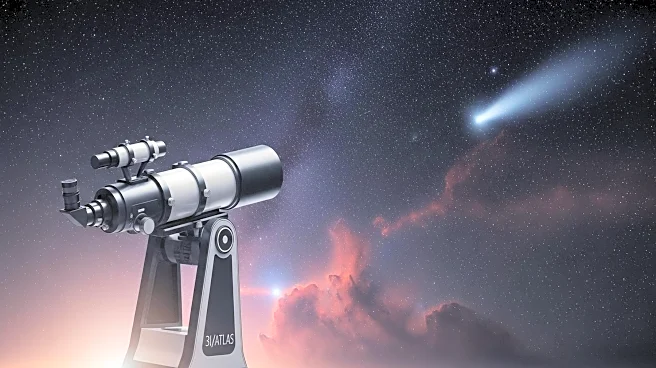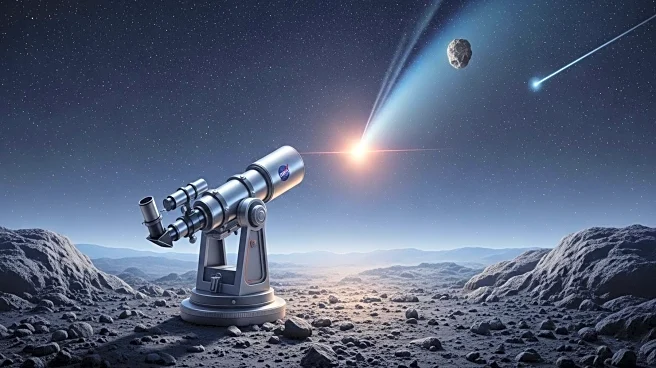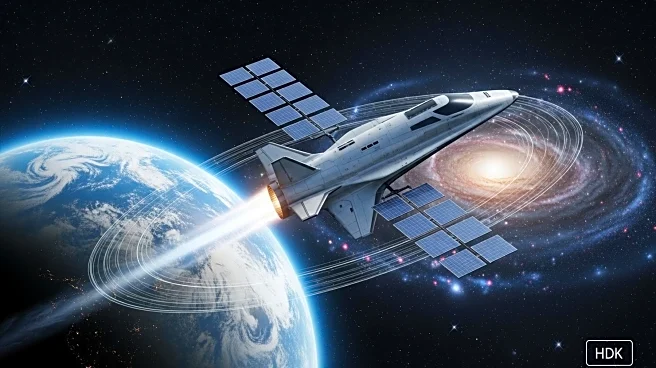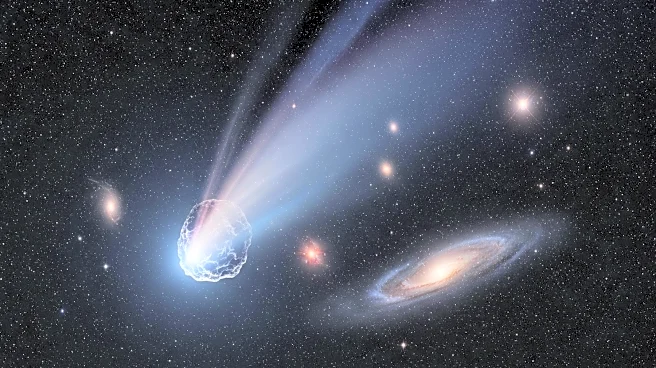What's Happening?
Astronomers have identified a small asteroid, named 2025 PN7, that has been orbiting the Sun in a path similar to Earth's for decades. This asteroid, referred to as a 'quasi-moon,' is not a true moon because it does not orbit Earth directly. Instead, its orbit around the Sun closely mirrors Earth's, making it appear as though it is accompanying our planet. Discovered by the Pan-STARRS1 telescope in Hawaii in August 2025, 2025 PN7 is approximately 19 meters across, making it potentially the smallest quasi-moon ever found. Its small size and narrow visibility windows have contributed to its evasion of detection until now. Historical data suggests that 2025 PN7 entered its current orbit in 1957, and simulations predict it will remain in this orbit for another 60 years before moving away.
Why It's Important?
The discovery of 2025 PN7 is significant for several reasons. Firstly, it adds to the understanding of quasi-moons, which are relatively rare and provide unique opportunities for scientific study. These asteroids, due to their proximity and similar orbital paths to Earth, are accessible targets for unmanned missions, offering a cost-effective means to test planetary exploration technologies. Additionally, the presence of such objects highlights the dynamic nature of celestial bodies in our solar system and the potential for future discoveries. While 2025 PN7 poses no threat to Earth, its study could enhance knowledge of asteroid composition and behavior, contributing to broader planetary defense strategies.
What's Next?
Astronomers will continue to monitor 2025 PN7 to better understand its trajectory and characteristics. The asteroid's orbit will be studied to refine predictions about its future path and potential interactions with other celestial bodies. Researchers may also explore the possibility of sending unmanned missions to 2025 PN7 to gather more detailed data, which could inform future space exploration efforts. As technology advances, the ability to detect and study such small and distant objects will likely improve, leading to further discoveries and insights into the solar system's dynamics.
Beyond the Headlines
The discovery of 2025 PN7 underscores the importance of continued investment in astronomical research and technology. As telescopes and detection methods become more sophisticated, the ability to identify and study small celestial bodies will expand, offering new opportunities for scientific advancement. This quasi-moon also serves as a reminder of the vastness and complexity of space, encouraging ongoing curiosity and exploration. The ethical considerations of space exploration, including the potential impact on celestial bodies and the environment, will remain a topic of discussion as humanity seeks to expand its presence beyond Earth.


